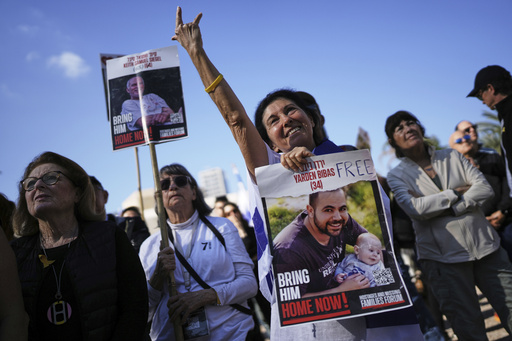Hamas released three hostages in the southern Gaza Strip on Saturday, marking the latest progression in the ongoing ceasefire agreement between Israel and Hamas, which has led to Israel’s release of 183 Palestinian prisoners. This constitutes the fourth phase of exchanges amidst a six-week truce that is designed to ensure the return of 33 hostages and close to 2,000 Palestinian detainees, along with facilitating the repatriation of Palestinians to northern Gaza and enhancing humanitarian assistance to the ailing region.
Next week, discussions will commence for the second phase of the ceasefire, focusing on the release of the remaining hostages and the potential for an indefinite extension of the truce. If negotiations fail to yield results, the conflict between the two parties may reignite as early as March.
Additionally, Palestinian health officials in Gaza announced the reopening of the Rafah border crossing with Egypt on Saturday, allowing access to medical care for thousands of Palestinians in urgent need. The reactivation of this border crossing signifies a crucial step forward in the ongoing ceasefire negotiations.
In related developments, the family of Keith Siegel expressed immense relief upon his return to Israel following his release by Hamas. Siegel, a dual American-Israeli citizen from North Carolina, was taken hostage during the militants’ incursion on October 7, 2023. His family shared their emotional response, stating, “After 484 long and terrifying days, we can breathe again,” and extended their gratitude to U.S. President Donald Trump, as well as the American and Israeli administrations for orchestrating his return.
Reports from Ramallah indicated that the Israeli Prison Authority confirmed the release of all 183 Palestinian detainees who were part of this exchange, with most being transferred to Gaza. Some returned to jubilant receptions in the occupied West Bank, while a handful of individuals serving life sentences were transported to Egypt ahead of deportation.
In another significant outcome of the ceasefire arrangements, 50 seriously ill and injured Palestinian children made their way to Egypt for medical treatment, facilitated by the reopening of the Rafah crossing. This marked a long-awaited development for these vulnerable children after months of border restrictions.
Among the released prisoners was Mohammed el-Halabi, a prominent aid worker sentenced to 12 years in prison after being accused of funneling funds to Hamas. Independent investigations have found no evidence supporting these claims, and the case has attracted significant criticism from human rights organizations regarding el-Halabi’s trial fairness.
As the prisoner release operations unfolded, the Palestinian Authority announced Israel’s agreement on releasing individuals detained without trial following the October 7 attack. This marks a departure from previous negotiations, which set a 30 to 1 ratio of Palestinian prisoners for each Israeli hostage. This time, the terms entail a larger number of detainees who had been apprehended in the aftermath of that day.
Amidst the emotional reunifications, Yarden Bibas seen in footage from the Israeli military, embraced his family members at a military base upon his return from Gaza. His children, abducted during the conflict, remain unaccounted for, adding a layer of urgency for the broader efforts towards hostage recovery. Israel has not confirmed the fate of the Bibas family, leading to ongoing concerns for the safety of those still held captive.
In a heartfelt affirmation, French President Emmanuel Macron acknowledged the return of French-Israeli citizen Ofer Kalderon amidst joy, yet continued urgency for the release of others still detained. He emphasized France’s commitment to ensuring the swift release of hostages.
As these developments unfold, the emotions surrounding the releases reflect both a sense of urgency and hope, as families eagerly await the return of their loved ones and the humanitarian situation for those in Gaza continues to remain critical.




